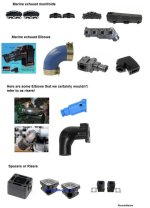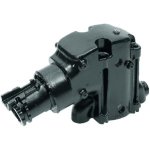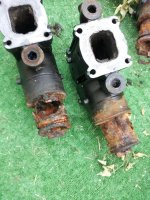I’ve pretty much have gone through my 2007 Larson with dual 2007 MPI 5.0 Bravo III. The only thing that worries me and do not know about is how to determine the status of the raw water cooled components. This is my first raw sea water boat. It does not have closed loop cooling. The engines have 330 hours and from what I can tell the PO didn’t bother with maintaining much. The engines ran great for many hours while relocating the boat and did not overheat at all.
I’m trying to educate myself on how the cooling system works in these engines. I’m going to replace the raw water pumps as soon as it comes out of the water for bottom paint. As far as I know the pump draws water from the hull then pushes it all through the block, heads, and then the exhaust manifold?!? Risers??? I was told one tell tale sign the manifold and risers are rusting out is that it will start overheating. I’m running normal temps. . I was also told that when they go out, it’ll hydrolock the engine which means replacing the entire thing. Is there any way to avoid a hydrolock.
I was also told that it’s a good idea to install a flush kit. I have had them in fresh water engines but not sure it makes sense on a sea water engine that will always be in water.
Thanks in advance for any input.
I’m trying to educate myself on how the cooling system works in these engines. I’m going to replace the raw water pumps as soon as it comes out of the water for bottom paint. As far as I know the pump draws water from the hull then pushes it all through the block, heads, and then the exhaust manifold?!? Risers??? I was told one tell tale sign the manifold and risers are rusting out is that it will start overheating. I’m running normal temps. . I was also told that when they go out, it’ll hydrolock the engine which means replacing the entire thing. Is there any way to avoid a hydrolock.
I was also told that it’s a good idea to install a flush kit. I have had them in fresh water engines but not sure it makes sense on a sea water engine that will always be in water.
Thanks in advance for any input.




